
Every year in reading week of the Spring Term, second year History of Art Undergrads at Birmingham head-off on a week-long study trip abroad. This year the chosen destination was Rome. The university-funded trip is designed to give students the opportunity to see and examine lots that they will have already studied in class, including artworks that are often still in their original locations.
So, at 5am on a very snowy Monday morning, we set off from the Barber Institute to catch our flight from Gatwick, leaving the snow behind for a jam-packed week a Roma!

Our arrival in Rome was rather dramatic. We were greeted on the first night with what can only be described as apocalyptic weather: torrential rain, thunder, lightening…. the lot. This took on a decidedly ominous significance when we discovered the following day that lightning had actually struck the lantern on top of the dome of St. Peter’s (click here), AND all this on the day that Pope Benedict XVI announced his resignation from the Papacy! (God’s wrath, perhaps? Should a Pope really be retiring?) But not taking it personally, and being a resilient bunch, we headed out on the first night (Flood or no Flood) to unleash ourselves on the city and its seemingly lawless roads to see the sights. We stopped-off at the Quirinale Horse Tamers, via the Baths of Diocletian, and on to the Trevi fountain and the Pantheon before splitting up for pizza, pasta, wine and, irrespective of the weather, gelato, fully aware that the mega itinerary kicked off with haste at 8 the morning after.
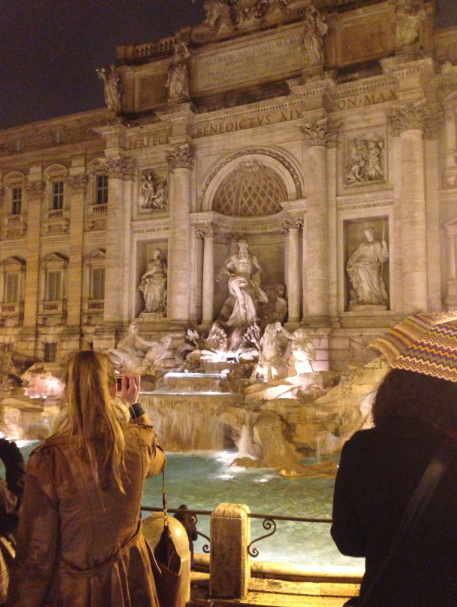
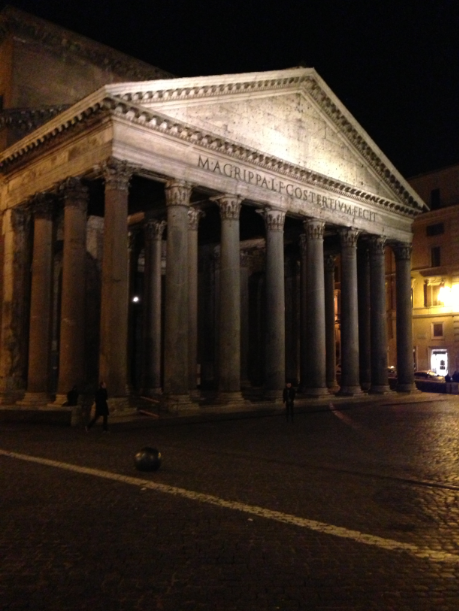
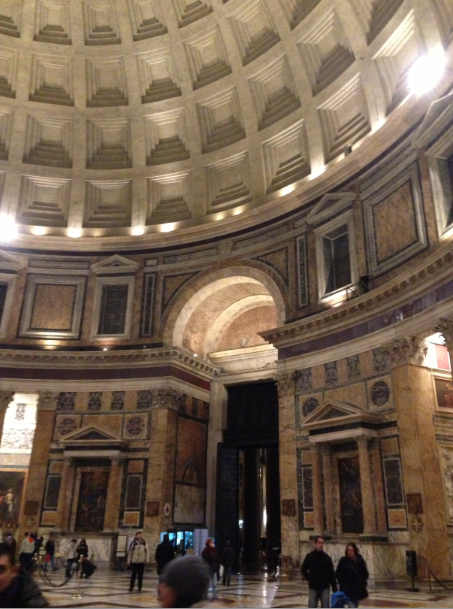
To say that we crammed a lot into our time in Rome would be a huge understatement. I’m not quite sure how many churches we visited, as well as museums including the Galleria Borghese, Palazzo Barberini, Galleria Nazionale d’Arte Moderna, the Capitoline museums and, of course, the Vatican. We saw sculptures, frescoes, panels and canvases by the likes of Michelangelo, Caravaggio, Raphael, Titian (the list goes on…) housed in impressive architectural schemes by Bramante, Borromini, Bernini, and others. We saw relics, like the chains of St. Peter, purportedly used to imprison the first ever Pope (…. “but are the chains real?”), which are kept inside S. Pietro in Vincoli alongside Michelangelo’s decades-long nemesis: the Tomb of Pope Julius II. The Sistine Chapel, with its famous ceiling and altar wall by Michelangelo as well we frescoes by the likes of Botticelli, certainly lived-up to the hype, as did the Stanze di Raffaello, a series of rooms inside the Vatican Palace decorated by Raphael. I was particularly chuffed, as a “Renaissance man”, to get a crafty picture of me inside the Sistine (below). The Italian officials invigilating inside the chapel are vehement in their dedication to reminding the thronging masses that there is to be “NO FOTO!”. Plus, I’d already been berated by them for lying down to see the ceiling properly–dodgy behavior that put me firmly on the chapel’s attendants’ radars. But I persevered and got my picture… (take this either as a warning or a challenge if you get to visit the chapel any time soon).

Easily one of the most impressive and endearing things about Rome is that there’s always something of interest just lurking round the corner. Narrow, medieval-feeling cobbled streets open-out suddenly on to spacious, pretty piazzas, often featuring a nice fountain or two to admire, some of these being Bernini’s handiwork. A row of fairly nondescript buildings can suddenly give way to some great edifice of a Renaissance palazzo, or a gleaning marble church front.
Rome’s treasures from Antiquity also often take you by surprise. Sculptured Roman senates hang around inside niches dotted around the city. Here and there are whopping sculptured columns or huge porphyry dishes that are used as bases for fountains. Meanwhile, Rome’s larger and infinitely more famous monuments like the Colosseum, the Forum and Pantheon take you less by surprise, since you’re usually looking to find them, but certainly never fail to inspire awe—at least one of the undergrads became infatuated with the Pantheon!
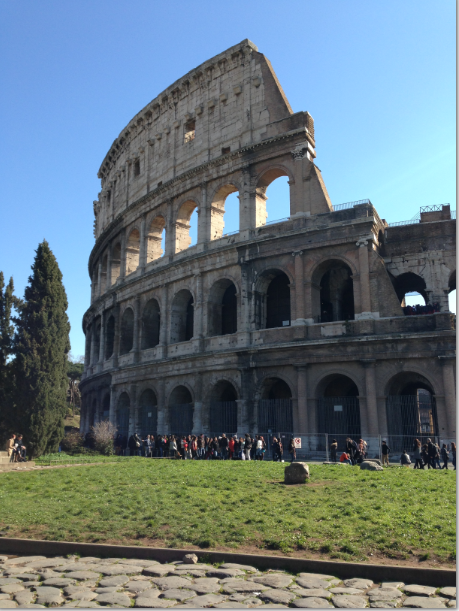
In our action-packed 5 days in Rome, we got to see all of this and plenty more besides. And although Rome is synonymous with the ancient world and the Renaissance, the trip is broader in its scope than that. Rome’s Galleria Nazionale d’Arte Moderna was on the agenda, and many of our intrepid young art historians went off to see things like the Palazzo della Civiltà Italiana (a.k.a. the “Square Colosseum”), that in-your-face example of fascist architecture, or the Cinecittà, a large film studio that is considered the hub of Italian cinema. This year Grace also went off to the MAXXI gallery, which shows another side to Rome than most of us would expect, being a particularly striking example of ultra-modern, minimalist architecture by Zaha Hadid, which houses work by artists including Anish Kapoor.
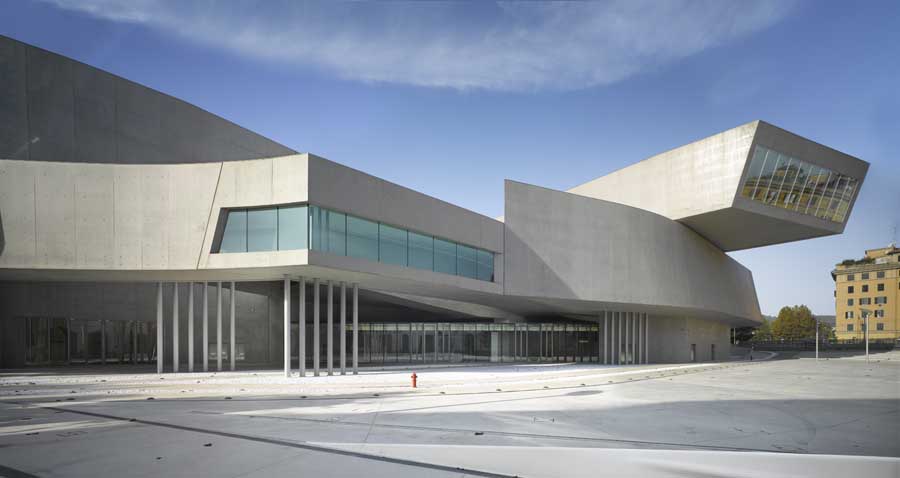
Reflecting on all that we saw, Marianne, one of the second years, said that:
“Rome was the perfect place for a HoA study trip because of the huge variety of art located there: you could spend the morning exploring the ancient architecture at the Forum and Colosseum, and in the afternoon, wander around the pop art paintings and installation art of the Modern Art Gallery, after stopping in to see a Caravaggio or Michelangelo inside a church along the way.
Rome also provided the perfect opportunity to view first-hand so many of the paintings that we’d previously studied in lectures (particularly those of the Renaissance period). Having the chance to see near-legendary images such as the Sistine Chapel ceiling in real life was extraordinary, and it’s only then that you realise that seeing these pictures reproduced in books will never compare to viewing them in their intended settings.”
While Grace, another second year, thought that Rome is
“… a brilliant place to go for a History of Art trip because of the sheer volume of art and architecture there is to see, not just from the Renaissance and Classical periods, but right up to the present day. Its history as being a city central to religion, politics and art made it an exciting place to be, especially when looking at artworks within these contexts. Furthermore, it’s a beautiful place in itself, and so much to see and do outside of the itinerary.”
Clearly, the trip achieved what it set out to do: to inspire and enthuse.
On their return to Birmingham, the second years are required to research, write and deliver an assessed presentation about an artwork or building that they studied during the trip. Marianne has chosen Bernini’s Four Rivers fountain at the Piazza Navona as the subject for her presentation, was taken by the way that “Bernini had juxtaposed the smooth stone of the four figures with the roughness of the rocks was incredible, and the obelisk set on top of the fountain seemed oddly out of place… When I saw the fountain in real life, I was completely blown away by the sheer scale and immense detail of it…”. Rebecca, another of the second years, has chosen the façade of San Carlo alle Quattro Fontane by Borromini as the subject of her presentation, saying that ‘I’d studied it briefly for A Level and it made an impression on me when I saw it “in the flesh” on the trip. It stood out for me for its quirkiness- it appeared so outlandish for such a small building.’ Clearly, actually seeing these things makes all the difference: you can truly grasp an artwork’s or a building’s scale or impact, you can comprehend more of the artist’s techniques and make-out the subtle effects exhibited by a work. And especially in Rome’s churches, you gain a very real sense of the kinds of contexts in which a work of art was originally displayed and how that particular object may have functioned in that particular context as an accessory to the liturgy.
And the trip wasn’t all all just work. The itinerary certainly accommodated a bit of fun, too!
Despite a stormy start, we were blessed with glorious winter sun and blue skies all week, which made strolling around the Forum or waiting around in the Borghese gardens or at the Piazza del Campidoglio before going on to our next destination even more enjoyable, besides giving us Brum-based folk a much-needed opportunity to top-up our depleted Vit.D reserves. The food was probably a highlight for everybody–the Italians, as they say, know how to live. Marianne describes “being sat in the afternoon sunshine, eating the best lasagne I’ve ever tasted, directly opposite the Pantheon was pretty amazing, especially knowing that, if I’d been back in Birmingham, I would have been stuck in the snow!”

The social aspects of the trip are just as important as its academic ones. The trip abroad brings the students together, strengthening old friendships and creating new ones, but also gives staff and students the opportunities to get to know one another that little bit better, whether it be over dinner or during a chat in front of a building, sculpture or painting. Josh, a second year, said that “It was such a fun trip and it was really good for us to all get to know each other better. Although we are midway through second year, some of us were still quite shy around one another and the trip made such a difference to that. It was a great mixer for the group and everyone got on really well!.” All the second years would, I think, agree that the trip brings the year together and this is especially true for joint honours students like Marianne: “the trip brought the whole year together, and it was really nice to be able to talk to students that are usually in different classes. As I’m doing a joint honours course, it’s sometimes difficult to have the opportunity to mix with course mates in the same way that single honours students do, but the trip helped to break down boundaries, and I think everyone came home feeling that they’d got to know at least one person better than they had before.”
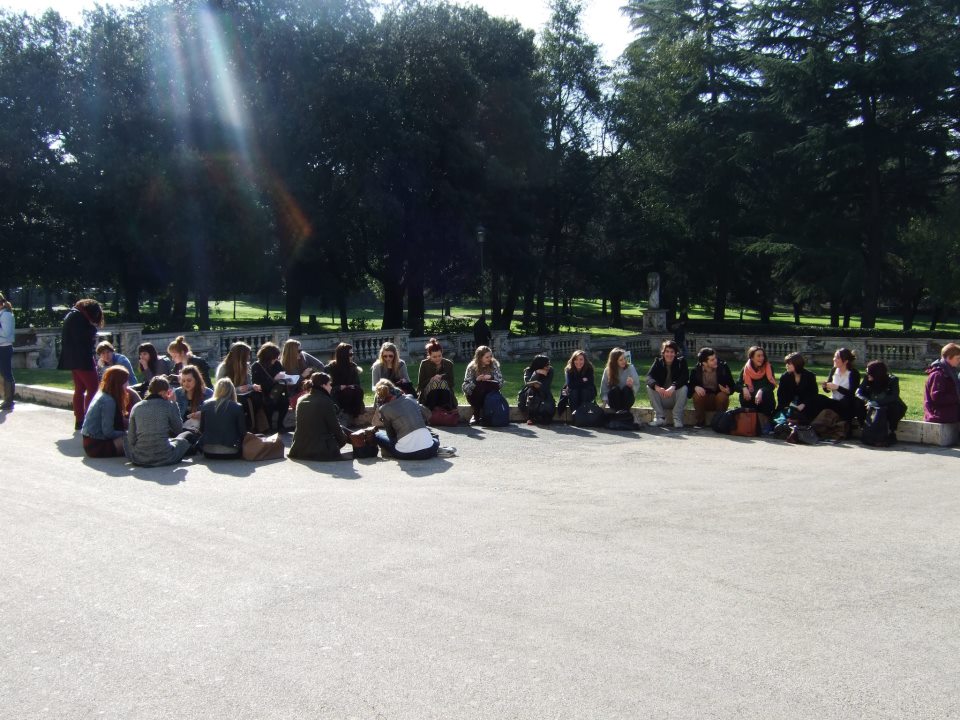
The trip ended on Friday night with all of us heading down to the local pizzeria. There’d been an onslaught of art over the course of the preceding days, and at this particular restaurant, there was an onslaught of food: plenty of delicious antipaste, pizza, frankly giant bowls of pasta and tiramisu, all of which was, of course, eased down with a glass or 3 of vino. There was also a quiz. Serious questions designed to flex our memories like “How high in feet is the dome of St. Peter’s?” (it’s 448ft) were interspersed by less-serious ones like, as Grace recalls, “To the nearest century, how old is… David?”, which is a bit of an in-joke about David who has been at the Department since its inception. Predictably, our journey home from Roma to Birmingham was less cheery than our journey out had been. No doubt a mixture of the downer produced by having had to say “ciao!” to Rome and the onset of exhaustion as the week’s miles-by-foot caught up with us (and, let’s be honest, most of us were nursing sore heads from the previous night’s wine consumption). But let’s leave the final word to Grace, who says that it was “altogether a fantastic trip”.
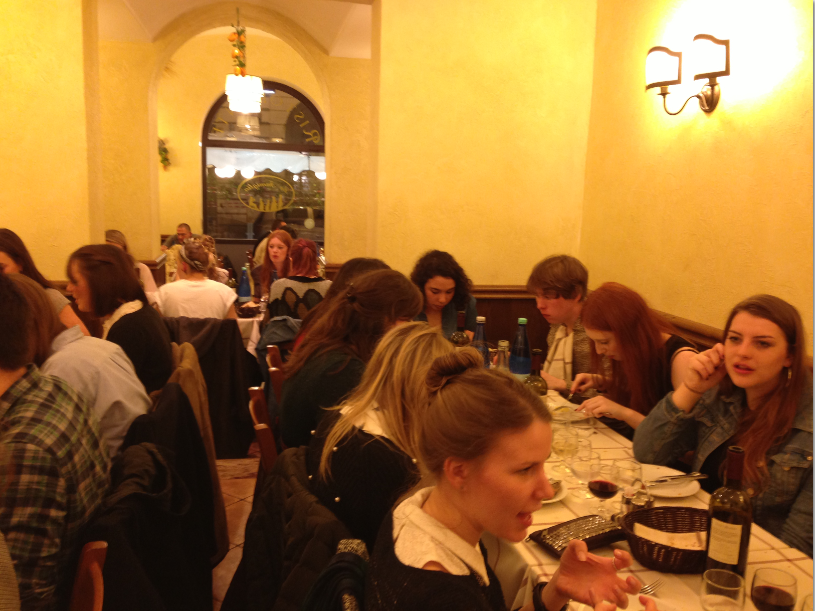
[…] because of a flight cancellation–post about the trip to follow soon, but here’s last year’s!–I took the opportunity to go straight to the […]